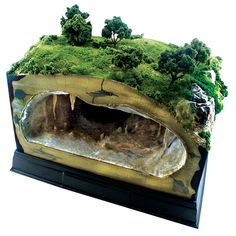Activities
Bat activities for kids:
Kidsoup Preschool bat activities
Become the Bat
The structure of a bat is unique. Help your kids understand bat anatomy in a fun way by inviting them to dress as bats.
Each student will need a bath towel and two small sandwich bags to simulate both the span and transparency of a bat's wings. Explain that a bat's wing doesn't have feathers, like a bird's does; it is actually made of thin, tough, and semitransparent skin. Have students drape their towels around their shoulders and put their hands into the bags. Since bats use their thumbs which stick out from their wings to grab onto walls and trees, have students push their thumbs through the bags. Explain that bats come in different colors and patterns (brown, gray, black, tan, red, frosted, spotted, etc.), just as students' towels may look different.
In order to fly, a bat moves its wings in the same way a person would move his or her arms to swim the butterfly stroke. Have students practice this maneuver by flying around the room.
Then tell the kids that, when bats sleep, they wrap their wings around themselves and hang upside down. Have students wrap their arms close to their bodies and pretend to sleep.
Bat caves
Bats live in all kinds of homes: Caves, barns, tall trees, attics, and garages are some of their favorite roosting spots.
Create a diorama of it. Provide cardboard boxes and art materials such as construction paper, paint, markers, crayons, glue, tape, and fishing line or yarn. For the bats, students can use their own drawings or cutouts.
As groups plan their models, encourage them to use the backs and outsides of their boxes as well as the insides. For example, if students chose a barn as their habitat, they could paint the back of the box like the front of a barn. Viewers will see the front of the barn and be able to turn it around to see inside, too. Encourage each group to present its diorama and include facts about the bats inside it.
The Benefits of Bats
Bats have an image problem! Most people think they are aggressive or dirty animals. In fact, bats are nature's exterminators because they eat so many insects and other pests. Bats are also nature's farmers; without bats, many plants would not be pollinated to grow new plants, and fruit-bearing trees would not produce nearly as many new trees.
Start a campaign by making posters, buttons, and bumper stickers about the benefits of bats.
Halloween Party Game - Echolocation
Have you ever wondered how bats are able to hunt for food at night when it is dark? Scientists have discovered that bats use echolocation to find their prey. When a bat is flying, it makes a series of high-pitched squeaks that humans can't hear. The sounds hit an object and bounce back to the bat, like an echo. The bat is able to tell the size and distance of the object just from the echo. This allows the bat to lock in on its prey, swoop down, and catch it.
This could be a great Halloween party game. Give kids a chance to practice their own echolocation. Choose one student to be the bat, and blindfold him or her. Arrange the other students in a circle around the bat, and select another student in the circle to be the bat's prey. Ask the bat to call out echo from the center of the circle. The prey should respond location. The bat continues to say echo, moving slowly toward the location of the prey. Once the bat has found the prey, he or she stops and takes off the blindfold. Allow other students to take turns at being the bat or the prey.
Zookeeper for Bats
Bats eat a variety of food. Although a few drink the blood of livestock, most eat fruit, insects, and fish. Tell students that they are going to be zoo keepers in charge of a bat exhibit for the day. An important part of this job is to plan meals for the bats - create a bat diner.
Assign a few different bats to each group, such as the vampire bat, flying fox bat, bumblebee bat, big-eared bat, bulldog bat, and little brown bat. Have each group research what its bats eat and look like. Then encourage the kids to create menu posters to share their findings with the kids. Students in each group can work together to draw pictures of their bats, or find photographs on the Web or in magazines. Below these images, they can draw or glue cutouts of the foods they've selected for each bat.












